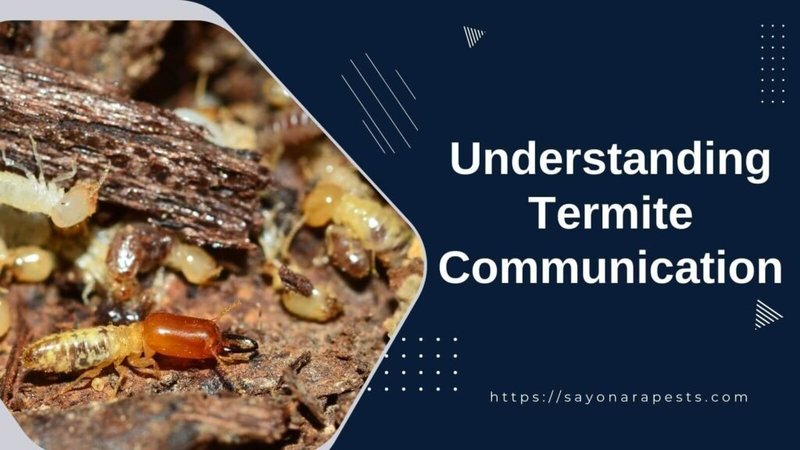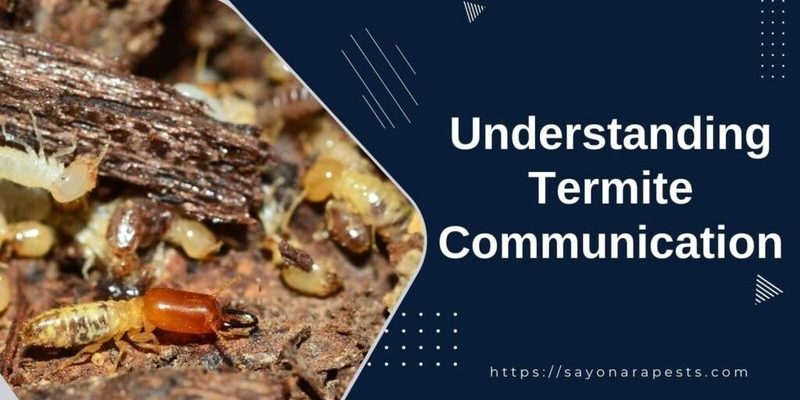
When we think about communication, we often picture humans chatting or texting. But termites operate in an entirely different world, relying on a form of interaction that’s unique and efficient. Picture this: instead of voice or text, they send chemical signals that convey messages. It’s like having a smartphone in your brain that connects you to your whole family, only these signals are invisible to human eyes! Let me explain how these remarkable insects communicate and interact within their colonies.
Understanding Termite Society
Termites live in large colonies that can range from a few hundred to millions of individuals. This social structure is key to their survival. Inside a termite mound, you’ll find various castes, including workers, soldiers, and reproductive members. Each type has specific roles that keep the colony thriving.
The worker termites are the backbone of the colony. They build tunnels, forage for food, and take care of the young. On the other hand, the soldiers protect the colony from threats like predators. The reproductive termites, often called the king and queen, are responsible for ensuring the colony grows by laying eggs. So, you see, every role is critical for the success of the whole group.
Without these structured roles, the colony would quickly fall apart. Think of it like a sports team—every player has a position, and teamwork is essential for winning the game. That’s exactly how termites operate; their communication and interactions are geared towards efficiency and survival.
How Do Termites Communicate?
Termite communication relies heavily on pheromones, which are chemical signals they release to convey different messages. Imagine you’re in a crowded restaurant, and someone offers you a dish that smells irresistible. You instantly know it’s something good! In the termite world, these chemical signals guide workers to new food sources or warn of dangers.
For instance, when a worker termite finds food, it releases pheromones to alert others. This is similar to sending out an invite to a party: “Hey everyone, there’s food over here!” The other workers follow the trail of pheromones to the food source. The stronger the signal, the more urgent the message. It’s like when you really want your friends to come to your birthday party—you’ll go all out to get their attention!
But it’s not just about finding food. Termites also use pheromones for mating. When the queen produces pheromones, it signals to the king and potential mates that she’s ready to reproduce. This intricate dance of chemicals is essential for maintaining their population and colony dynamics.
The Role of Vibrations in Communication
Apart from pheromones, termites also communicate through vibrations. They do this by banging their heads against the walls of their tunnels or drumming their bodies. Picture a drummer signaling a beat to the band. These vibrations can alert others about danger or even signal for help.
For example, if attackers like ants approach, worker termites might rapidly bang their heads against the tunnel walls, sending a warning signal throughout the colony. The soldiers then rush to defend their home. This method of communication is vital, especially in situations where pheromones might not be effective, like during a fast-paced attack.
Interestingly, termites rely heavily on their sense of touch and vibration, which might be more developed than their sense of sight. It’s like having a sixth sense, allowing them to pick up on subtle changes in their environment.
Termite Interactions: The Importance of Cooperation
One of the most interesting things about termites is how they cooperate. Their interactions are guided by instinct and the need to work together for the colony’s benefit. Think of it like a large family where everyone pitches in to make things work—each member contributes in their own way.
For example, when building a nest, worker termites cooperate to move soil and wood. They communicate through pheromones and vibrations to coordinate their efforts, ensuring that the structure is strong and secure. Without this teamwork, the nests would collapse, and the colony would struggle to survive.
Also, termites exhibit a form of altruism; for instance, soldiers will sacrifice themselves to protect the colony. It’s a profound demonstration of their commitment to their shared home. This type of behavior might seem foreign to us, but it’s crucial for maintaining the colony’s health.
Learning from Termites: Communication in Nature
Observing how termites communicate can teach us valuable lessons about cooperation and teamwork in our own lives. Just as termites use signals to work together, effective communication is vital for us too. Whether in a workplace or at home, clear communication leads to better relationships and more successful projects.
Moreover, the complexities of termite communication remind us of how interconnected we are in nature. Every species, no matter how small, plays a part in the ecosystem. Termites not only communicate with each other but also with other species, helping break down organic matter and enriching the soil. This interconnectedness is essential for maintaining balance in the environment.
So, next time you see a termite mound, remember that it represents so much more than just a pile of dirt. It’s a bustling hub of communication, cooperation, and teamwork that has existed for millions of years.
Threats to Termite Communication and Interaction
Despite their resilience, termites face several threats that can disrupt their communication. Human activities, such as deforestation and pesticides, can destroy their habitats and interfere with their chemical signals. Imagine if you suddenly found yourself in a crowded room, but everyone was wearing noise-canceling headphones. Communication would be nearly impossible!
Additionally, invasive species can challenge local termite populations. They often outcompete native termites for resources or disrupt their social structures. This harsh reality illustrates how fragile their world can be and emphasizes the importance of preserving these incredible creatures.
Protecting termite habitats isn’t just about saving them; it’s about preserving the ecosystems they support. By safeguarding their environments, we help ensure that their unique method of communication continues to thrive.
Termites might be small, but their ways of communicating and interacting are truly remarkable. Through a combination of pheromones, vibrations, and teamwork, they create a complex society that thrives against the odds. By learning about these tiny insects, we gain insights into the importance of communication and cooperation in both nature and our lives.
Next time you think about termites, picture a busy colony working together, sending signals with their bodies and chemicals, ensuring their survival one message at a time. It’s a beautiful reminder of the power of community, even in the most unexpected places. So, let’s appreciate these incredible insects and the lessons they can teach us about collaboration, and perhaps even think twice before reaching for that bug spray!

